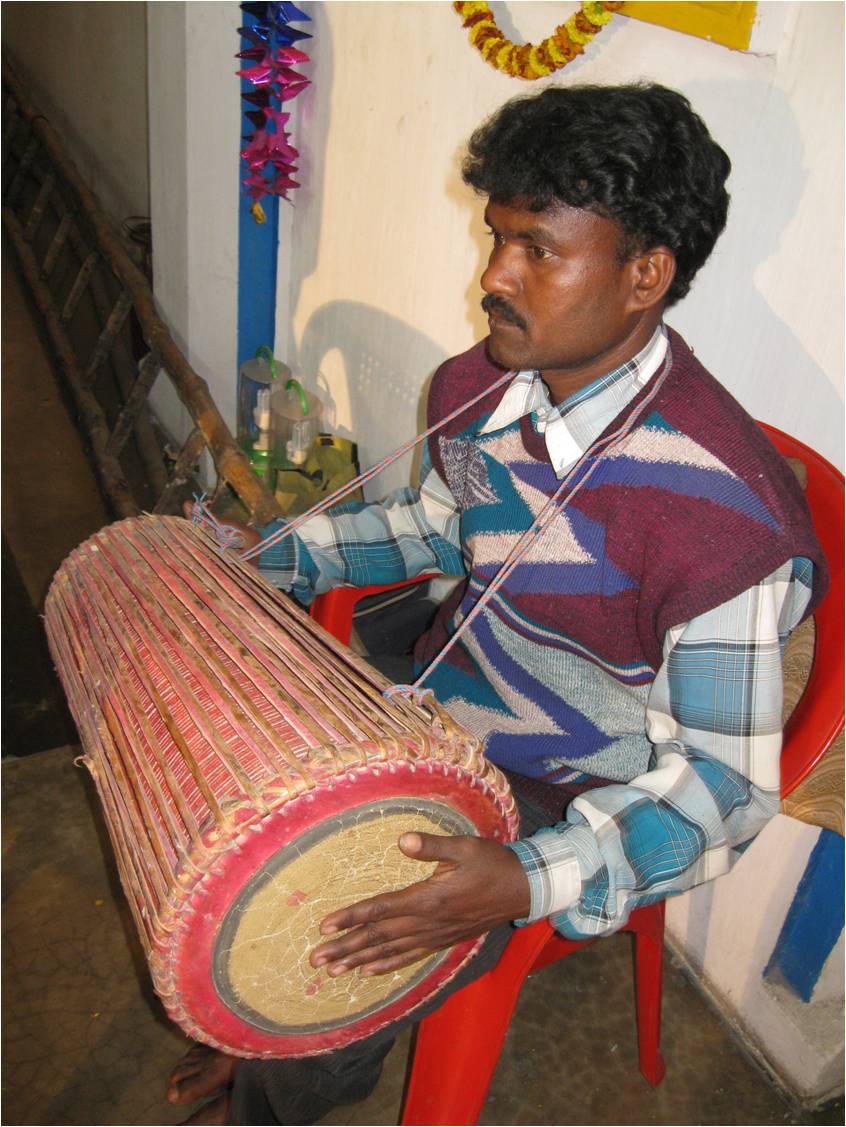Tumdak' on:
[Wikipedia]
[Google]
[Amazon]
 The tumdak is a hand-struck double-headed
The tumdak is a hand-struck double-headed
 The tumdak is a hand-struck double-headed
The tumdak is a hand-struck double-headed membranophone
A membranophone is any musical instrument which produces sound primarily by way of a vibrating stretched membrane. It is one of the four main divisions of instruments in the original Hornbostel-Sachs scheme of musical instrument classification. ...
of the Santal
The Santal or Santhal are an Austroasiatic speaking
Munda ethnic group in South Asia. Santals are the largest tribe in the Jharkhand and West Bengal state of India in terms of population and are also found in the states of Odisha, Bihar and A ...
people of India
India, officially the Republic of India ( Hindi: ), is a country in South Asia. It is the seventh-largest country by area, the second-most populous country, and the most populous democracy in the world. Bounded by the Indian Ocean on the ...
and Bangladesh
Bangladesh (}, ), officially the People's Republic of Bangladesh, is a country in South Asia. It is the List of countries and dependencies by population, eighth-most populous country in the world, with a population exceeding 165 million pe ...
. Tumdak is a Santali famous instrument. Tumdak is used santali traditional festival. The Santal typically use the Tumdak' in combination with the Tamah' for religious ceremonies and Santal festivals. Both drums are almost universally played by men rather than women. The body of the drum is cylindrical and made from clay. The two heads of the drum are usually cowhide, the right one being slightly smaller than the left. Like many similar Indian drums, each head has a round patch of tuning paste in the center which enhances the sound. When played for dancing, the Tumdah' player suspends the drum around his neck with a cord or leather strap. The Tumdah' falls within the larger category of double-headed hand-struck Indian drums, which have various names: Dholak
The ''dholak'' is a two-headed hand drum, a folk percussion instrument. The instrument is about 45 cm in length and 27 cm in breadth and is widely used in '' qawwali'', ''kirtan'', ''lavani'' and '' bhangra''. The drum has two differe ...
, Nal
NAL or Nal may refer to:
In organizations:
* Nal Sarovar Bird Sanctuary, in India
* National Aerospace Laboratories, India
* National Aerospace Laboratory of Japan
* National Alliance of Liberals, a political party in Ghana
* United States Nation ...
, Mridangam
The mridangam is a percussion instrument of ancient origin. It is the primary rhythmic accompaniment in a Carnatic music ensemble. In Dhrupad, a modified version, the pakhawaj, is the primary percussion instrument. A related instrument is th ...
. The player strikes the Tumdak' with full hand and fingers as required by the musical pattern. The rhythm of the Tamak' and Tumdak' set the basic metric/rhythmic pattern for Santal dances and are essential for traditional Santal music.
See also
*Santal
The Santal or Santhal are an Austroasiatic speaking
Munda ethnic group in South Asia. Santals are the largest tribe in the Jharkhand and West Bengal state of India in terms of population and are also found in the states of Odisha, Bihar and A ...
* Santal music
* Music of India
Owing to India's vastness and diversity, Indian music encompasses numerous genres in multiple varieties and forms which include classical music, folk (Bollywood), rock, and pop. It has a history spanning several millennia and developed ov ...
References
Indian musical instruments Directly struck membranophones {{Membranophone-instrument-stub